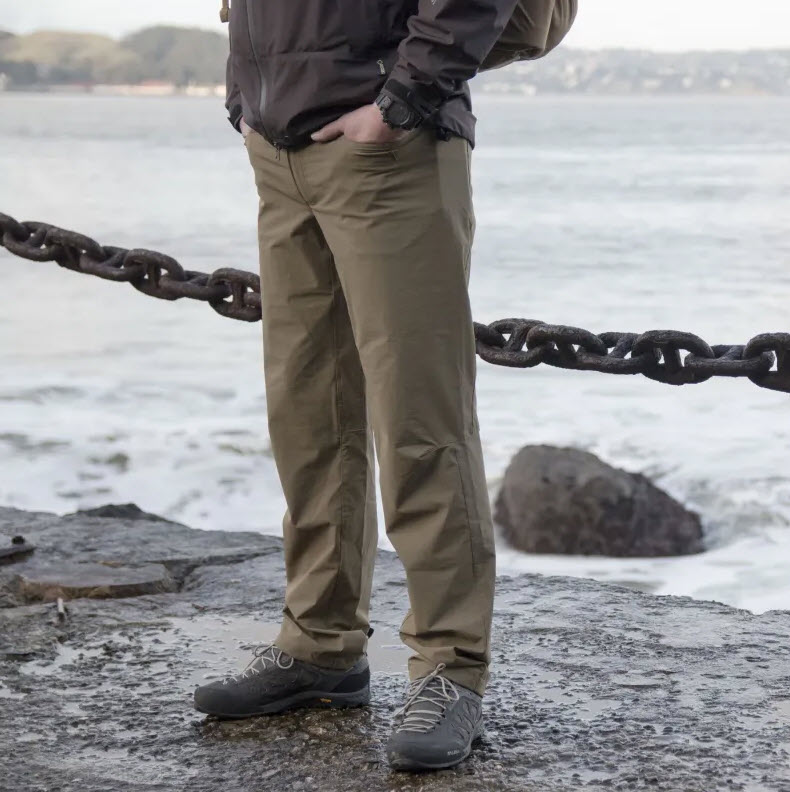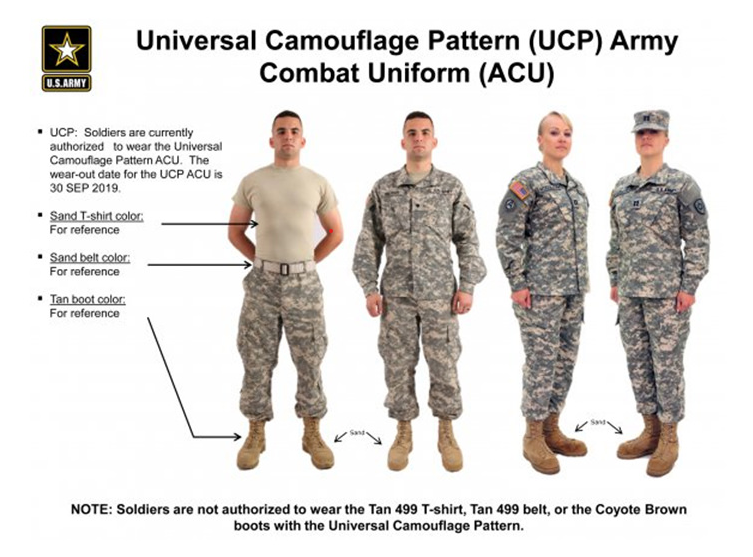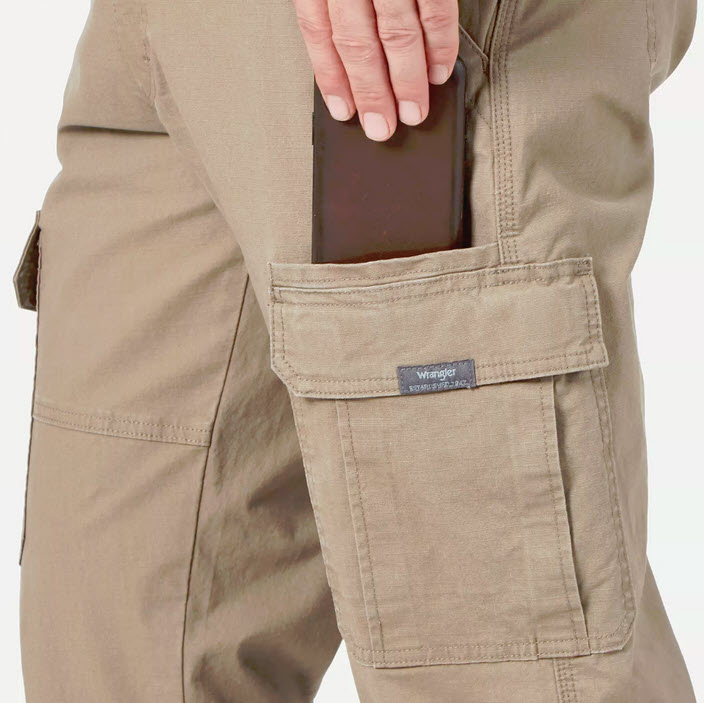
Tactical clothing is supposed to take excess wear and tear and has materials and features providing superior resistance to the elements. Caring for your tactical clothing – pants included – shouldn’t be very complicated nor require special cleaning products.
However, it would help if you didn’t neglect to care properly for your tactical pants, since that will expand their life span. As long as you take good care of your tactical pants, they should last you for many years ahead.
Page Contents
First things first – read the labels
No matter which brand your tactical pants are, you should always begin by carefully reading the instructions that accompany your garment. Some pants feature care instructions on tags, whereas others will come with care documentation. Should you ever doubt how to clean your pants, it’s best to get in touch with the manufacturer or the company you bought the pants from. Some care instructions work as general guidelines appropriate for most tactical pants, but you shouldn’t skip on reading the labels of your pants.
Read also: Wrangler Riggs Workwear Men’s Ranger Tactical Pant Review
Washing the tactical pants – general rules
Tactical pants from reputed brands will come with labels displaying the ideal washing practices. The majority of tactical pants are conceived for wash-and-wear, so you won’t have to struggle a lot to keep them in the best shape.
Take the next steps for caring, while considering the particularities of your tactical pants too:
Get rid of the dirt
The first step to take when washing your tactical pants is to brush away the pants’ ground-in dirt. Shake the pants to get rid of as much land as you can.
Wash the pants
Most tactical pants are made with cotton and polyester, so cold or warm water is recommended for washing. Never use hot water on your tactical pants as you may cause shrinkage and fade the colors. Also, using hot water will make the pants bleed, ruining other clothing in the washing machine.
Keep in mind that some tactical pants come with treatment for superior resistance to water and elements (Teflon coating), and washing them too frequently will decrease the treatment’s efficiency. Using hot water will ruin the coating in the long run.
Always use a gentle cycle on your tactical pants; use the heavy-duty wash only if the pants are filthy.
Pre-soak
When your tactical pants are heavily soiled, you should pre-soak them for the best cleaning results. If you’re afraid that the pants will stain, you should spot-treat the pants. Use a gentle washing cycle after you’ve finished with the spot-treatment.
Use mild detergent
Most tactical pants require only a mild detergent or a regular laundry soap for cleaning. Avoid the powerful detergents with bleach because bleach corrodes the tough fibers of your tactical pants.
What if your tactical pants come with particular features?
Some tactical pants come with specific hardware and fasteners, which can be damaged or wear down if you’re not cautious when cleaning/washing the pants. If your tactical pants come with hook-and-pile fasteners or Velcro, you should apply the following tips:
Secure the features
It would help if you always began with securing every hook-and-pile fastener together before washing your pants. Even if you clean the pants by hand, you should protect the special features.
Turn the pants inside out.
It’s important not to allow the fasteners to stick to other clothing. Turn your tactical pants inside out before washing to reduce that risk, but also for helping them not to wear down too soon.
Don’t use a softener
Even if you like the soft-touch feel that softener gives your tactical pants, you should never use it. The softener will only coat the hook-and-pile fasteners and reduce their ability to hold together.
What about fire-resistant pants?
Some tactical pants are fire resistant, and it’s no brainer that special care is required with these pants. Never dry-clean the fire-resistant pants as the solvents from the process will ruin the pants and destroy the protective coating. Some tips are fundamental when caring for your fire-resistant pants:
- Stay away from fabric softener as it’s typically oil-based, and it will aggravate flammability.
- Don’t ever use bleach because it destroys the flame-resistant coating and discolors the material as well.
- Avoid the automatic dryer if the pants come with reflective trim, as the dryer may decrease the efficiency of the reflective tape.
Caring for ACU, BDU, and ABU uniform
Tactical pants come in several types, and properly carrying your uniform will expand its durability.
ACU (Army Combat Uniform)

The ACU pants make the most common kind of tactical pants amongst people in the military.
Never starch or iron the ACU pants because you will ruin the fabric and the camo pattern.
Using iron or starch will fade the color in some areas, so your uniform pants won’t fit the standards military anymore. The colors will get brighter, and your pants will be too bright, affecting the night vision camouflage or safety in stealth missions.
Remove insignia
You have to remove all insignia with Velcro on your tactical pants to curl at the edge, losing the professional look.
Use cold water
As stated before, always wash with cold water and some mild detergent without any ammonia, bleach, or optical brighteners.
Tumble dry
When done with washing, tumble dry your pants on low heat. After taking the pants out of the dryer, let them dry completely on a rust-proof hanger or flat surface.
Never wring or twist the tactical pants, as you will create creases and wrinkles.
BDU (Battle Dress Uniform)
These pants are used in combat by military personnel of all branches and law enforcement too.
The BDU tactical pants are effortless to take care of, and you only need warm water and some mild detergent for washing. Place them on a low heat setting and tumble dry only.
Don’t forget to hang the pants once the washing and drying end. It’s possible to starch the pants, but you don’t have to do it. The BDU tactical pants are stiff and don’t develop wrinkles.
ABU (Airman Battle Uniform)
Only Airmen wear the ABU pants that also provide effortless maintenance. Also, you don’t need to starch the pants to preserve the crisp and wrinkle-free look.
You can use optical brightening detergents with the ABU pants without worrying about damaging the pattern. It’s also possible to use a less mild detergent, but you should still stay away from bleach as it will fade the colors.
Go over the washing instructions for ACU pants for proper carrying for the ABU tactical pants.
What’s the recommended technique to dry tactical pants?
Tumbled dry on the low-heat setting is the best way to dry the tactical pants without stressing about losing the properties of your tactical pants. Make sure to place the pants in the dryer only giving the manufacturer’s instructions a good read. Here are more tips on drying:
- Don’t use high-heat cycles to maintain the pants colorfast.
- Take the pants out of the dryer once they have dried. Avoid wrinkles setting into the fabric by folding or hanging the pants.
Hang-drying the tactical pants
If you want the best results for your drying, you should pay attention to the next tips:
- Use a second spin cycle in the washing machine. It will remove any excess water from your pants.
- Shake your pants and re-shape them before hanging the pants for drying
- Don’t fold the pants over the clothesline, as you will have bad looking creases in your pants.
What makes up a tactical gear outfit?

Tactical pants represent just one piece of the garment of a tactical outfit. If you’re a civilian, the chances for you to have to wear a tactical outfit are slim. However, it’s helpful to know about the elements that give a tactical outfit. Each of them has a specific role and tactical clothing is efficient due to its particular functionality. Every detail plays its own part in protecting you.
If your mind is set on buying tactical gear, you have to know which type of tactical gear to buy, the purpose you’re buying it for, the problems you will encounter, and how that piece of garment will help you succeed. Scroll down to learn the basic information on the essential components of a complete tactical outfit and each item’s functionality.
Backpacks
When we talk about improvements in the tactical gear industry, most of us will think of the technological innovations in electronic devices. However, it’s the subtle backpack that has known some of the most impressive changes over the years.
Days when backpacks were made from canvas are long gone; modern models have almost nothing in common with the comfortable and rugged packs we see today. From internal frame models that excel at weight distribution to modular load-carrying equipment (molle) with heavy-duty nylon for effortless attachment, modern backpacks bring insane features to the table. You cannot have a tactical outfit without the proper pack.
Pants
Initially developed for mountain climbers, tactical pants have become the no1 option for serving agents and first responders. However, people outside the military will use tactical pants for many challenging activities: hiking, hunting, biking, etc.
Tactical pants are easily recognizable by the deep pockets, reinforced stitching, knee pads, and design for comfortable wear.
Boots
You cannot skip your footwear when you create a tactical outfit. Look for boots/shoes that are made to last even when worn on the rugged trail. The proper boots will give you stability on most tracks, don’t cause blisters (make sure you break them in before wearing them), and speed whenever necessary.
When selecting your tactical boots, pay attention to durability, comfort, and resistance to elements. Water-resistance is good to have and so is breathability. Military professionals also use combat boots.
If your boots are uncomfortable or poorly made, they can cause injuries and even put you in danger. It might not seem like a life-threatening scenario, but sore points and blisters from boots can stress you out and make you lose focus when you need it the most.
Watches
Tactical watches are waterproof and made to withstand harsh environments. Modern tactical watches can even monitor biometrics so you can keep an eye on your body’s overall condition. It can be crucial information when you exert yourself.
Gloves
You should also protect your hands, especially when you anticipate needing to climb rugged trails. Some tactical gloves come with special pressure-point padding to reduce the effects of injuries. Tactical gloves may also come with lining that protects against harsh weather environments.
Belts
When you look to have a complete tactical outfit, you will need to carry some tactical gear around with you. Tactical utility belts represent one of the most reliable tools to help you have tactical gear.
Even if you carry most of your weight in the backpack, you will need to take some of the items at hand. When you can attach tactical gear to your belt, you can have them right where you need them, at any moment.
Typically, you can attach several items to your belts, such as a flashlight and tactical knife. With tactical scenarios, you have to be prepared for anything. Tactical belts will hold more weight than regular belts. Most will have several clips so that you attach as many items as needed.
Holsters
Like belts, holsters represent a fantastic method to carry the tactical equipment you need in a blink of an eye. Holsters are highly versatile and you can use them for effortless access to hunting and camping tools. You can also use holsters to hold your rugged outdoor flashlight.
Typically, you will attach holsters around your waist. If you want a more discrete look, you can wear them beneath the arms and faster around your chest, beneath your clothing.
Vests
When we talk about tactical vests, we should speak of utility vests and body armor vests. Utility vests typically have the same qualities and characteristics you see in tactical pants and belts. They feature several deep pockets and help you carry gear without dragging you down with excess weight.
Body armor vests will protect you from accidental harm and assault. They can be bulletproof and vary in protection degree. The US National Institute of Justice has ranked for body armor vests in protective qualities from level IIA to IV.
It goes without saying that you don’t necessarily need to use all the items to have an efficient tactical outfit. You can combine what you need whenever you need it and try the combinations that work best for you. Have an open mind about it, as some items will work, even if you doubt it.
Can civilians wear tactical gear?
The laws on the tactical gear in the united states vary from state to state. However, most items are legal to buy and use from a general perspective. That doesn’t eliminate the need for you to check out the law in your local area before you purchase any form of tactical equipment. The research is mandatory when you plan to use self-defense gear defined as weaponry.
It’s not a legal problem to wear tactical gear as a civilian. However, the tactical gear is incredibly vast, so you should always verify the regulations in your local legislation. For instance, civilians are forbidden to buy/own military-grade, level-three bulletproof vests in most states.
Even if some states allow gear, some particular circumstances apply. For example, if you buy body armor in Connecticut, you need to do it face-to-face. In some states, you can buy the same gear online. Even if the tiny differences don’t look significant, you need to adhere to them. Otherwise, you will have to deal with critical legal repercussions.
You should be aware of the law against impersonating military personnel. It’s ok to use armored vests and headgear, but you cannot look too much like a military professional—you risk legal charges.
In Closing
There’s a high risk for drip drying to make the tactical pants stiffer than tumble-drying. However, the best tactical pants will keep their shape and properties for many years, requiring little maintenance altogether.







